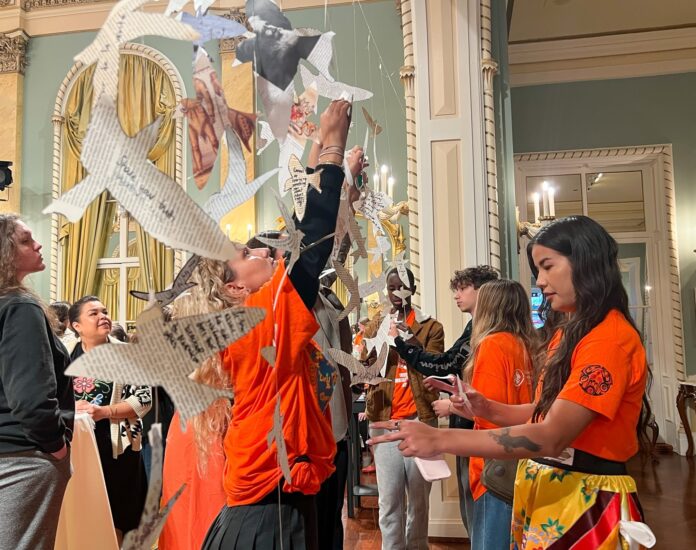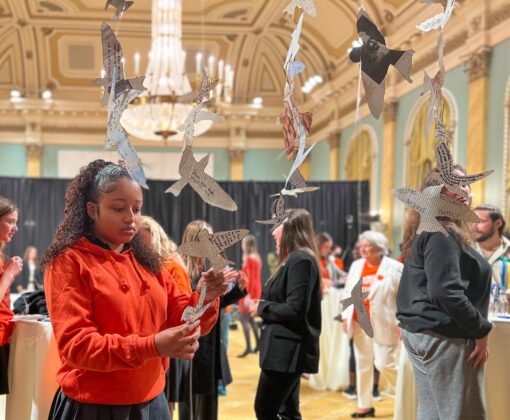
Canada’s Governor General Mary Simon invited Ottawa youth and Indigenous community members to a Learning and Healing Through Art workshop at Rideau Hall on Sept. 29.
Situated on the unceded territory of the Algonquin Anishinaabe peoples, the healing discussion commemorated this year’s National Day for Truth and Reconciliation.
Simon, who is Inuk, encouraged guests to consider what inclusive history entails in her opening speech.
“The history of our country began well before Confederation. Reflecting this truth is what it means for history to be inclusive. Inclusive history does not mean that we erase what we know. It means adding to history, expanding it to include all perspectives,” Simon said.
Following Simon’s remarks, youth guests participated in an intergenerational dialogue between local youth, elder Solomon Wawatie, Michelle Metatawabin from the Ottawa Aboriginal Coalition, as well as artist Merly McMaster. Dancer Brad Lafortune also performed a traditional Red River jig as an introduction to Métis culture.

Learning and Healing Through Art provided an opportunity for youth to reflect on the history of residential schools, the importance of reconciliation and how art can be a catalyst for change.
The event included a hands-on activity inspired by McMaster’s artwork, “Murmur.” Participants cut out paper birds from history books and maps, adding a temporary art installation to the ballroom. Guests then wrote messages on the paper birds related to truth and reconciliation.
McMaster said art can share history while providing Indigenous and non-Indigenous people with an enhanced reflective lens.
“[Art] is just a new way of telling our stories. It’s a new way of presenting these harder histories. The visual medium for me as a youth, and even presently an adult, was something that always made me have a different perspective and enter into these harder topics,” McMaster said.
Anya Watson, a Nepean High School student and Learning and Healing Through Art guest, said the event enriched her understanding of the importance of working collaboratively to foster reconciliation.
“I think to move forward in a positive way, there has to be reporting [on] the truth,” Watson said. “I haven’t really learned much about [Indigenous history] through school. But recently, I’ve had the opportunity to learn so much. I’m really grateful for that.”
Since being appointed Canada’s 30th Governor General in July 2021, Simon has been encouraging Canadians to learn about Indigenous history and culture. She said part of reconciliation is building new relationships based on respect, healing and understanding.
Simon added she firmly believes that educating Indigenous and non-Indigenous youth includes sharing cultures.
“Indigenous people are very much a part of this country. They’re the first peoples of the country. And, as you probably know, historically, that part of history has been absent. It’s important to be able to tell that story,” Simon said. “Today allows people and young people to have that conversation. I think these are really important parts of what reconciliation is about.”

The Learning and Healing Through Art event sparks hope for the next generation, Simon said.
“The youth came. They are interested in learning more about Indigenous people and what this day means,” she said. “That understanding has been lacking in our system and our education system. It shows to me that when youth make the effort to come and learn that they are genuinely interested.”
Featured image by Anya Swettenham/the Charlatan.








